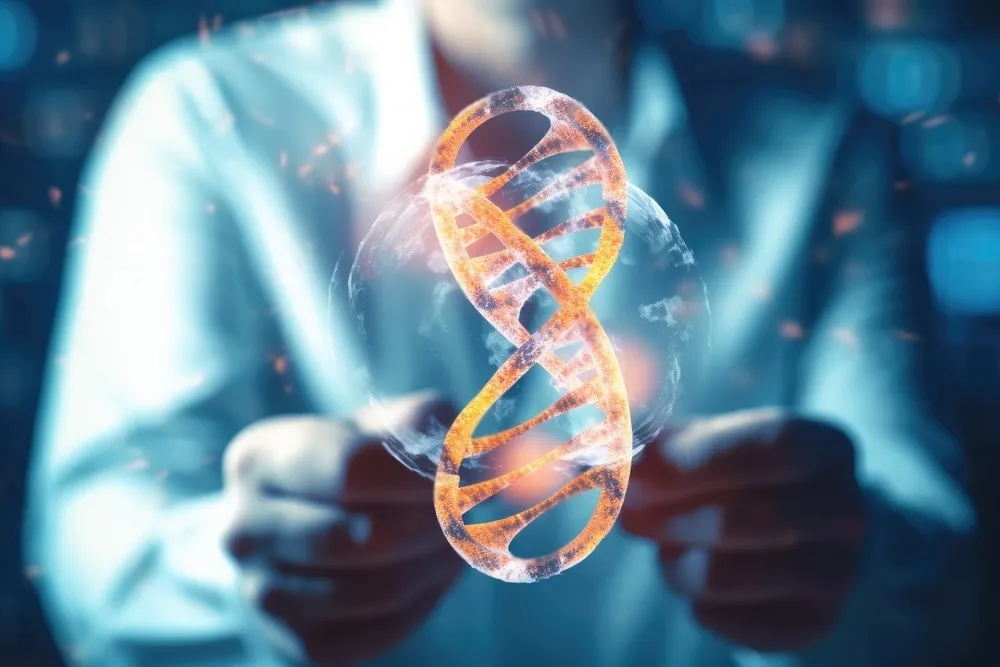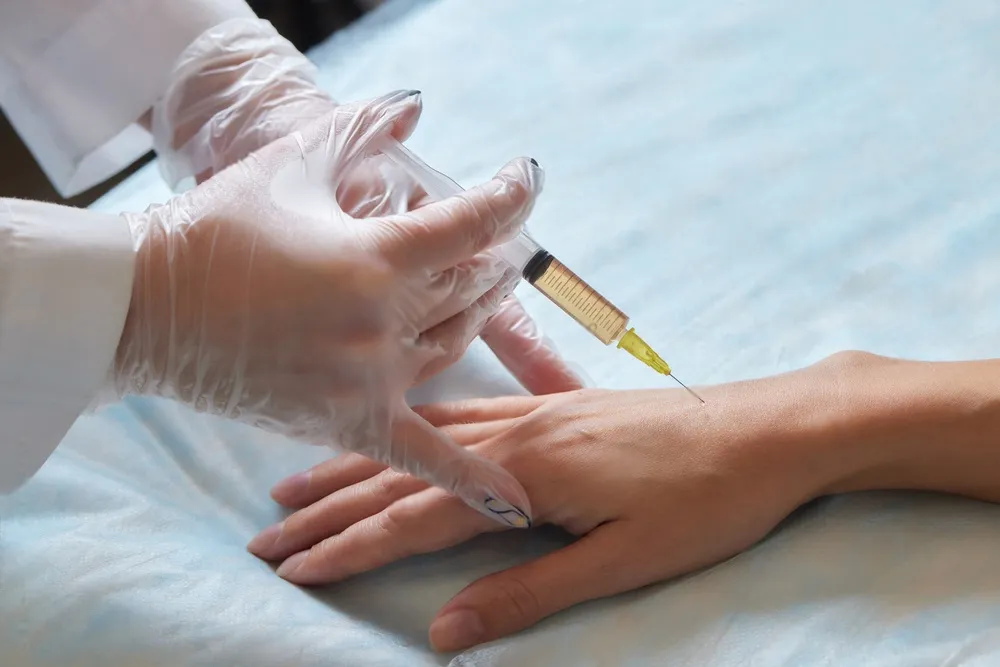In the age of horse-drawn carriages, no one could’ve imagined you’d one day be able to heal your body by regrowing tissues and organs. Yet, that’s the promise of regenerative medicine, a field you’re about to dive into.
You’ll learn how it’s redefining healing and the potential it holds for treating diseases that were once thought incurable. Grasp the basics, from stem cell therapy to the marvels of tissue engineering, and consider the ethical debates you’ll inevitably encounter.
As you explore the key components and techniques, you’ll understand how this modern alchemy works to restore your body’s damaged cells. Regenerative medicine isn’t just a glimpse into the future; it’s a reality you’re living in, and it’s reshaping the world of healthcare as you know it.
Key Takeaways
- Regenerative medicine focuses on repairing, replacing, or regenerating damaged tissues and organs through advanced technologies such as stem cell therapy, tissue engineering, and molecular biology.
- The goal of regenerative medicine is to address the limitations of the body’s natural healing processes and harness the power of stem cells to restore function and improve the quality of life.
- Key components and techniques in regenerative medicine include stem cell therapy, gene editing, and the use of biomaterials such as scaffolds and matrices to support cell growth and tissue development.
- Ethical considerations and challenges in regenerative medicine include concerns about the source of stem cells, access and equity issues, and uncertainty about long-term effects. Balancing innovation and moral responsibility is crucial in navigating these challenges.
Discover More About Us – Physicians Group, LLC
The expert team at Physicians Group, LLC, a specialized clinic for automobile accident injuries, offers comprehensive care across a network of 25 accessible locations.
TOUCH BASE FOR ASSISTANCE WITH YOUR APPOINTMENT ONLINE
With a widespread presence in regions including Auburndale, Bradenton, Brandon, Palmetto, Ft Myers, Jacksonville Beach, Jacksonville, Orange Park, Lakeland, Clearwater, New Port Richey, Port Charlotte, Sarasota, Sebring, Spring Hill, St. Petersburg, Tampa, Temple Terrace in Florida, as well as Brooklyn Park, Robbinsdale, Minneapolis, Richfield, and St Paul in Minnesota, Physicians Group, LLC is a prime destination for addressing injuries post-automobile accidents.
Our Expertise
Endorsed by The Joint Commission, Physicians Group, LLC stands as a comprehensive hub for the treatment of musculoskeletal injuries. Its multidisciplinary team comprises of seasoned medical doctors, skilled chiropractors, osteopathic professionals, attentive nurse practitioners, and proficient physician assistants.
The group is adept at managing a spectrum of musculoskeletal discomforts, from joint, back, to neck pain. By leveraging state-of-the-art technology and diagnostic tools like DynaROM™ motion testing, digital motion X-rays (DMX) for the cervical spine, and cutting-edge regenerative therapies, they are equipped to foster optimal recovery.
Emphasizing a nurturing, patient-focused atmosphere, the dedicated personnel at Physicians Group, LLC ensures thorough consultations and in-depth discussions, allowing them to grasp every patient’s specific complaints and aspirations fully. Treatment plans emphasize non-invasive and integrative approaches, with surgical interventions being considered as necessary.
Don’t allow the aftermath of vehicle accidents to impede your lifestyle. Initiate your path to recovery at Physicians Group, LLC by reaching out to your local branch or by securing an appointment through our online platform.
Our Services:
Conditions We Treat:
Contact Us:
→ https://physiciansgroupllc.com/contact-us/
Defining Regenerative Medicine
At its core, regenerative medicine is a branch of medical science that focuses on repairing, replacing, or regenerating damaged tissues and organs in the body. This transformative field merges with advanced technologies such as stem cell therapy, tissue engineering, and molecular biology.
You’re looking at the potential to address the inherent limitations of the body’s natural healing processes. By harnessing the power of stem cells, which can differentiate into various cell types, regenerative medicine aims to restore function where it’s been compromised. It’s not just about patching up damage; it’s about promoting the re-establishment of normal function.
You’re tapping into the body’s own repair mechanisms, magnifying their effectiveness and, in some cases, you’re engineering entirely new tissues. This is precision medicine at its most innovative, aiming to reduce the need for long-term care and improve quality of life.
Key Components and Techniques
You’ll discover that regenerative medicine relies on several key components and techniques, including stem cell therapy, gene editing, and biomaterials, to facilitate the repair and regeneration of tissues. Each of these elements is critical and serves a unique function within the larger regenerative framework.
- Stem Cell Therapy: Harvests and manipulates cells that can differentiate into various tissue types to restore damaged areas.
- Gene Editing: Employs tools like CRISPR-Cas9 to correct or modify genetic defects that contribute to disease or impair healing processes.
- Biomaterials: Utilizes scaffolds and matrices that support cell growth and tissue development, often acting as templates for tissue regeneration.
These innovative approaches are reshaping the medical landscape by offering solutions that go beyond mere symptom management to address the root causes of disease and injury.
Stem Cell Therapy Explained
Since the inception of regenerative medicine, stem cell therapy has revolutionized how we approach healing and tissue regeneration. Stem cells are the body’s raw materials, cells from which all other cells with specialized functions are generated. Under the right conditions, these cells divide to form daughter cells, either becoming new stem cells (self-renewal) or differentiating into specific cells (potency) with a more specialized function, such as blood, brain, or muscle cells.
You’ll find stem cell therapy’s potential most compelling in its ability to repair damaged tissues that don’t regenerate naturally. By introducing stem cells into the affected area, they can promote healing by differentiation and integration into the existing tissue architecture. This process is critical for treating degenerative diseases, where traditional therapies have fallen short.
Advances in Tissue Engineering
As you explore the field of regenerative medicine further, one will find that tissue engineering stands at the forefront of innovative treatments, enhancing the body’s natural healing processes through the development of biological substitutes. This discipline merges the principles of engineering with the biological sciences to fabricate tissues that can repair or replace damaged ones.
Recent advancements encompass:
- 3D Bioprinting: This technique allows for precise layering of cells and biomaterials, creating complex tissue structures with high resolution and customization.
- Smart Biomaterials: These materials can respond to biological signals, promoting tissue integration and regeneration.
- Stem Cell Engineering: Pioneering methods for directing stem cell differentiation have opened avenues for creating specialized tissues with improved functionality.
These cutting-edge technologies are reshaping the landscape of medical treatments, offering hope for conditions once deemed untreatable.

Ethical Considerations and Challenges
How do these innovative advancements in regenerative medicine align with the ethical frameworks guiding medical practice? As you delve into the transformative world of regenerative therapies, you must scrutinize the ethical landscapes they traverse. The potential to heal is profound, yet it carries weighty ethical implications.
| Ethical Issue | Emotional Consideration |
| Source of Stem Cells | The dilemma of using embryonic stem cells sparks deep moral concerns about the sanctity of life. |
| Access and Equity | Disparities in who can afford cutting-edge treatments can evoke a sense of injustice and social division. |
| Long-term Effects | Uncertainty about future health outcomes may cause anxiety and fear among patients and society. |
Navigating these challenges requires a delicate balance between innovation and moral responsibility, ensuring that progress in regenerative medicine enhances, not compromises, our collective ethical standards.
Frequently Asked Questions
How Does Regenerative Medicine Differ From Traditional Pharmaceutical Treatments in Terms of Cost and Accessibility for Patients?
Regenerative medicine often incurs higher costs and faces more accessibility hurdles than conventional drugs due to its advanced technology and personalized treatment approaches, potentially straining your wallet and healthcare access.
Can Regenerative Medicine Be Used in Conjunction With Traditional Cancer Treatments, and if So, How?
Yes, you can use regenerative medicine with traditional cancer treatments to enhance healing and tissue regeneration post-therapy, potentially improving outcomes and reducing side effects through methods like stem cell transplants and tissue engineering.
What Are the Environmental Impacts of Regenerative Medicine Practices, Including the Sourcing of Materials and the Disposal of Biological Waste?
You must consider the environmental cost of regenerative medicine, like sourcing materials sustainably and managing bio-waste effectively to mitigate ecological impacts. It’s key to balance treatment innovation with environmental responsibility.
How Does the Regulatory Approval Process for Regenerative Therapies Compare to That of Conventional Drugs or Medical Devices?
You’ll find that the approval process for regenerative therapies is often more complex due to their novel nature, requiring additional scrutiny compared to conventional drugs or medical devices.
What Role Do Artificial Intelligence and Machine Learning Play in Advancing Regenerative Medicine Research and Personalized Treatment Plans?
Artificial intelligence and machine learning help you analyze complex data, predict outcomes, and customize treatments in regenerative medicine, making therapies more efficient and tailored to individual patient needs.
Conclusion
In conclusion, you’ve ventured through the transformative realm of regenerative medicine, grasping its core principles and groundbreaking techniques.
Stem cell therapy and tissue engineering stand as pillars in this field, offering profound healing potential.
Yet, ethical quandaries and practical challenges persist, demanding your keen scrutiny and responsible innovation.
Embrace this knowledge, for you’re now equipped to contribute to a future where medicine doesn’t just treat symptoms but fundamentally restores health.




